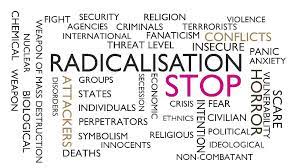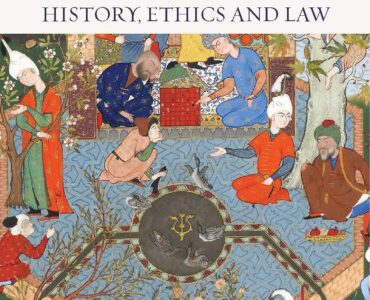
The Globalization Of Islam
Since the early 1970s, western Europeans and North Americans have become increasingly concerned about an apparent change in the nature and patterns of human migration. For some this change threatens to alter the ethnic and religious composition of their nation-states, their democratic and capitalist traditions, and their liberal social values. The emigration and settlement of Muslims from more than seventy nations to the West has been of some concern. For those in the West who believe in the purity of race, civilization, and culture, or in a super-sessionist “Judeo-Christian” worldview, this movement of Muslims is a menacing threat to what they believe to be a homogeneous Western society. For others it increasingly represents a significant demographic shift that posits a major cultural challenge, the precise consequences of which are unpredictable and unforeseen, because they require a variety of adjustments by both the host countries and the new immigrants.
Until recently many Europeans and North Americans tended to identify Islam with the Arabs. More knowledgeable scholars added parts of Asia and Africa to the abode of Islam. Other scholars were reluctant to admit that not only is Islam a universal religion with adherents throughout the globe, but that it has increasingly become part and parcel of the West. Ignoring “the facts on the ground,” they persist in thinking of Muslims as displaced persons temporarily residing in the West, who will one day pack up and return to where they came from or to “where they belong.” Still others, who for religious or political reasons wish away these Muslim immigrants, have become more shrill in declaring their presence a threat.
Many types of mosques and community centers have been built in America to serve the large and varied Muslim community there. One of the most elegant is the Islamic Center of New York. Designed by the architectural firm Skidmore, Owings, and Merrill, and located on 96th Street on Manhattan’s tony Upper East Side, it attests to the presence of an international community of Muslims in the metropolis.
The Encounter Of Islam With ‘THe West
The Muslim encounter with “the West” dates back to the beginning of Islam’s expansion. As Arab armies spread their hegemony over major parts of the Byzantine Empire in Southwest Asia and North Africa, large segments of the Eastern Christian churches (Byzantines, Jacobites, Copts, Gregorians, and Nestorians) came under their control. This close encounter generated a variety of experiences, ranging from peaceful coexistence and cooperation to mutual vilification and armed conflict. It also helped craft a corpus of polemical literature written by both Muslims and Christians, each seeking to demonstrate and proclaim the truth and superiority of their own religion. Each group faulted the other for basing their faith on falsified scriptures as well as proclaiming errant doctrines. The Muslim depiction of the Christian “other” and the Christian depiction of Islam have inevitably been forged by the historical context in which they were conceived.
Muslim expansion from North Africa into western Europe was stopped at Poitiers in 732, but the Ottomans in the East kept probing Europe’s defenses for several centuries until they were halted after the failure of the siege of Vienna in 1683. European areas that came under Muslim jurisdictions in Spain, Portugal, Sicily, and southern France between the eighth and the fifteenth centuries experienced a thriving cultural revival that became a major influence in the transmission of civilization that sparked the European Renaissance. The fall of Grenada in 1492 brought Muslim rule in western Europe to an end. A significant number of the Ottomans continued to live in eastern Europe, where some of the indigenous population converted to Islam in Bulgaria, Romania, Albania, and Serbia. The recent dramatic transplantation of Muslims into western Europe and North America has thus been called “the new Islamic presence.” Other scholars, noting the fact that Islam has modified the religious composition of western Europe and become its second largest religion, have begun to talk about “the new Europe.”
The second major Muslim encounter with “the West” was with Catholic Christianity during the crusades and the Reconquista. Although the crusades took place at the periphery of the Islamic empire and seem to have been concerned with containing and weakening Eastern Orthodoxy as much as Islam, the bloody story of the crusaders sacking Antioch and Jerusalem and slaughtering all the inhabitants is increasingly depicted in today’s Islamic literature as one of Western warriors consumed with Christian hatred, bent on eradicating Muslims and usurping their land. Similarly, the leaders of the Inquisition, armed with the assurance of Christian truth and virtue and in an effort to “de-Islamize” Spain, offered Muslims the options of conversion to Christianity, expulsion, or execution. In the process they all but eliminated the Muslim presence in western Europe, as the last Muslims were expelled in 1609. This phase provides an image of a West not so much interested in guiding Muslims away from their errant ways or debating the efficacy or truth of their beliefs as much as eradicating them. Polemics shifted from issues of errancy of doctrines and supersession to mutual declarations of kufr (unbelief) and apostasy, hence sanctioning violence as a means of restoring truth.
The third encounter is marked by Western colonial expansion into Muslim territory following the fall of Grenada in 1492. In this phase Muslims have encountered the West as a triumphant, conquering, and imperial presence. The colonial experience that initially pitted various European powers against one another in their quest to subjugate Muslims and monopolize their economic resources lasted until after the end of the second world war. By its end Europeans were able to create imaginary lines in the sand, parceling out Muslim territories in a variety of schemes, carving up the three Islamic empires (the Ottoman, Safavid, and Mughal) into what is today some fifty nation-states (members of the Organization of Islamic Conference). Meanwhile, more than one-fourth of the Muslims in the world continue to live under non-Islamic rule.
The colonial experience appears to have left a mark on the consciousness of those who were colonized. Islamist literature increasingly depicts the West as obsessed with combating Islam on all fronts. The West is often portrayed as marshaling its forces to launch a more pernicious attack under the guise of “civilizing” the Muslims and liberating them from “backwardness” and economic dependency, as seeking to subvert the influence of Islam on society by promoting the implementation of certain secular values as the foundation of political, economic, ideological, cultural, and social institutions. Dubbed as a “cultural attack” (al-ghazu al-thaqafi), it is seen as a multifaceted attack launched by colonial bureaucrats and their willing cadre of orientalists and Christian missionaries (both Catholic and Protestant). These bureaucrats and missionaries struggled to cast doubt about Islam by propagating the superiority of Western culture through such colonial institutions as schools, hospitals, and publishing firms, whose goal was to separate the Muslims from Islam.
The current encounter, still in progress, is a by-product of World War II. While this encounter has been conditioned and shaped during the third quarter of the twentieth century by the heritage of the postwar relationships between communism and capitalism, it is also marked by two distinct features. The first is the assumption of world leadership by the United States with the consequent creation and empowerment of the state of Israel and the invention of the “Judeo-Christian” worldview. The second is the emigration and settlement of Muslims and their acquisition of citizenship in the West, in western Europe, as well as in such established regions of European migration as Australia and New Zealand, Canada, Latin America, South Africa, and the United States.
The Globalization Of Islam
803 – 036
Home
Last Updated: 04/2022
See COPYRIGHT information below.



